Is it safe to camp in Baja California?
Disclaimer: This post contains affiliate links. At no cost to you, I might earn a small commission if you make a purchase through the links in this article.
Is camping in Baja safe?
Yes, but only if you take the necessary precautions. Your safety depends on where you choose to camp and how you present yourself, meaning that you should always keep a low profile, especially in remote areas.
Camping in Baja is a one-of-a-kind experience that allows you to spend time in nature, enjoy star gazing, and disconnect. It’s easy to see why it’s a bucket list item for many travelers.
I’ve camped in several places along the peninsula, including Loreto, Bahia de Los Angeles, and Todos Santos. I never had a problem, but I’ve also talked to many fellow travelers who said camping along the peninsula is a lot different now than it was before.
Baja is a beloved place for camping among many Americans who come here in their RV’s and camper vans to enjoy the stillness of the rugged desert and outdoor activities. However, safety in Baja has come into question following recent events.
The murder of three surfers south of Ensenada cast a dark shadow over Baja California and made many travelers question the safety of camping in Baja or reconsider their plans entirely.
As the news about the tragic deaths of three surfer friends made international headlines, Baja’s reputation as a top destination for camping and surfing became tarnished.
Just to clarify, I’m not here tell you that Baja has become a dangerous place. My goal is to give you enough infromation and tips so that you can enjoy your trip in a safe manner.
While camping in Baja isn’t perfectly safe these days, you can make it safer by carefully choosing your camping spots, doing research, and having the necessary gear.
In this article, I will give you my perspective on the changing situation in the region and offer my take on the best (and safest) camping areas in Baja California. With so much ground to cover, let’s dig in!
Is camping in Baja California safe?
Camping in Baja California isn’t always safe. To reduce your chances of risk, research camping spots, have a reliable connection, basic supplies, and exercise increased caution in remote areas, where help is not readily available.
15. Safety tips for camping in Baja
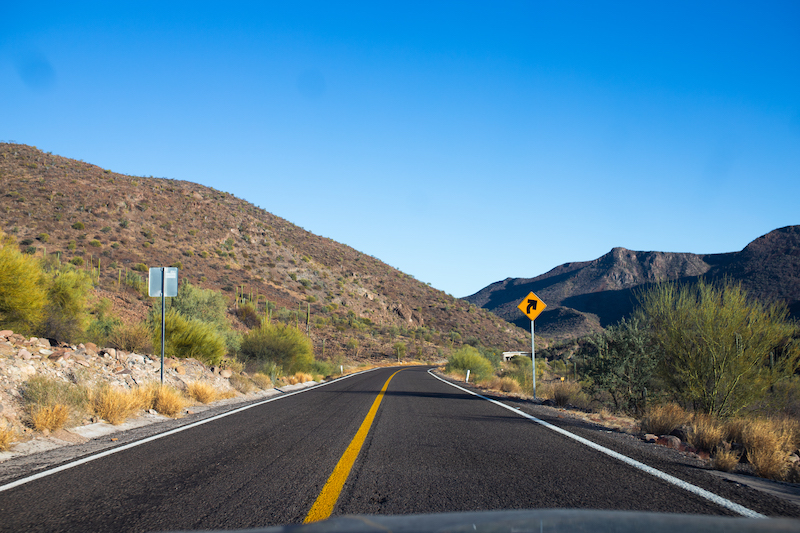
1. Always research campsites
Before the senseless murder of three friends on a surfing trip south of Ensenada, I would say that researching campsites in Baja was advisable. Now it’s a must.
Whether you are going to a full-fledged campground with staff and facilities or want to enjoy boondocking in Baja, find as much information as possible before choosing a place.
Read reviews on Google, TripAdvisor, or iOverlander, a database for travelers where you can find campsites, hotels, and other types of accommodations.
iOverlander also has an app with tons of great information about campsites in Baja, and the most recent reviews and updates.
Finally, you can find plenty of great information in Safe Camping in Baja, a popular Facebook group that has a big tight-knit community of Baja traveleres.

2. Be extra careful in remote campgrounds
Many travelers come to Baja because of remote camping. After all, Baja is known for its stunning desert vistas and the sense of solitude that not many other places can offer.
Unfortunately, camping safety in Baja has been on the decline, as cartels expanded their drug trafficking operations to remote parts of the peninsula, that some campers might find attractive because of their location.
If you do some basic online research, you will find out that many seasoned Baja campers don’t recommend staying by yourself in a remote area miles away from any help.
Why you should be careful in remote Baja campsites
Although you might not necessarily run into other people while boondocking in Baja, there’s always a chance that someone could see you camping in a remote spot.
They might not come in direct contact, but they will likely keep a close eye on you, to ensure you don’t interfere with their operations. As cartels shifted their focus to synthetic drugs, many traffickers started moving their operations to remote areas of Baja, so going willy-nilly to unfamiliar places could invite trouble.
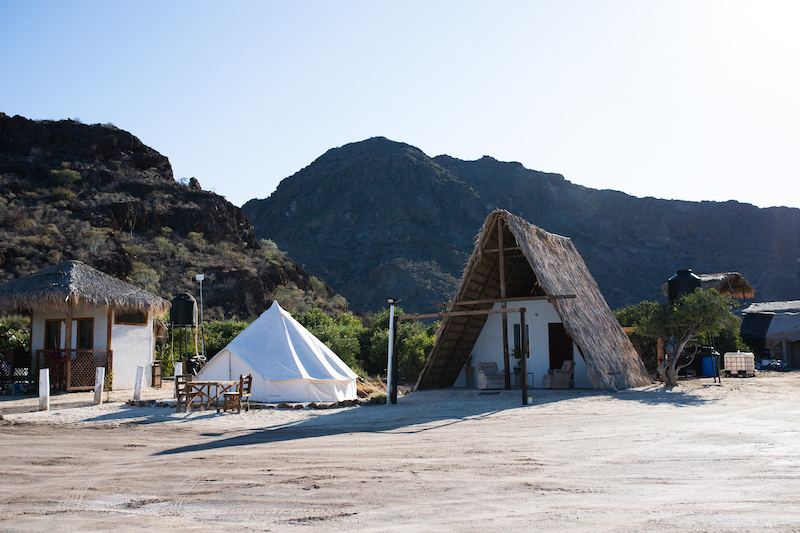
3. Consider campgrounds with facilities and staff
If you are traveling with your family, stay in a campground with better safety features. It might not be as adventurous as primitive camping in the desert, but you will be safer.
4. Have a reliable connection
No matter where you decide to camp, do your best to always have a good connection. Whether it’s a StarLink, or a GPS device, having a signal is paramount to your safety.
5. Keep a low profile
The bigger and more expensive your car/RV/camper van is, the more likely it is to attract attention. Your big RV will be far more visible in the desert than a car and a tent, which is easier to obscure depending on the terrain.
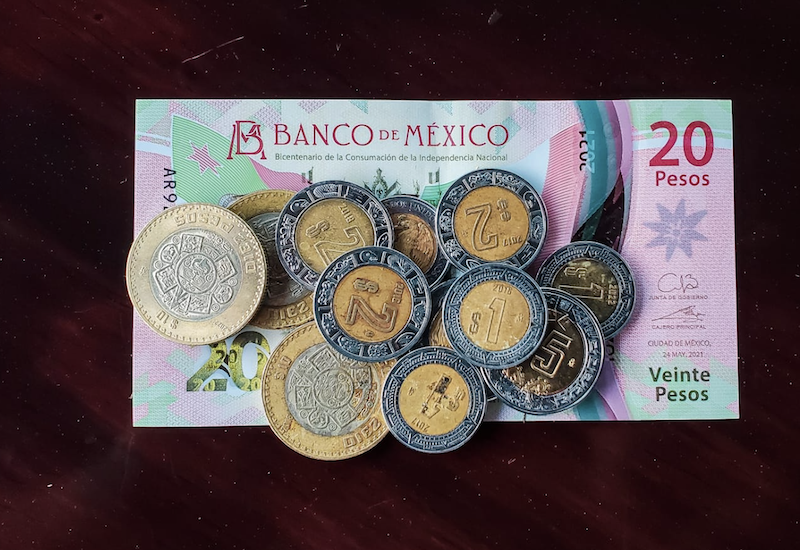
6. Always carry Mexican Pesos
As you drive away from bigger cities like Tijuana and Cabo San Lucas, you will pass through small towns where most businesses operate on cash.
You might be able to use your credit card at gas stations or convenience stores, but that is not always a given.
Additionally, many camping beaches in Baja have vendors who come here to sell food, water and souvenirs. They usually operate on cash.
7. Prepare to be self-sustainable
Many parts in Baja are off-grid, and you need to be self-sustainable if you want to camp remotely. Have a paper map, a reliable connection, and enough provisions to sustain you in an emergency.
8. Bring food and water
Always have more than enough food and water. Should something happen with your vehicle and you get stuck on the road, the amount of provision you have could be critical to your survival.
9. Pack essentials
Make sure to pack all the essentials such as a tent, sleeping bags, cooking equipment, first aid kit, a flashlight, and a spare set of batteries. Remote areas in Baja don’t have quick access to stores and facilities, so you should come prepared.
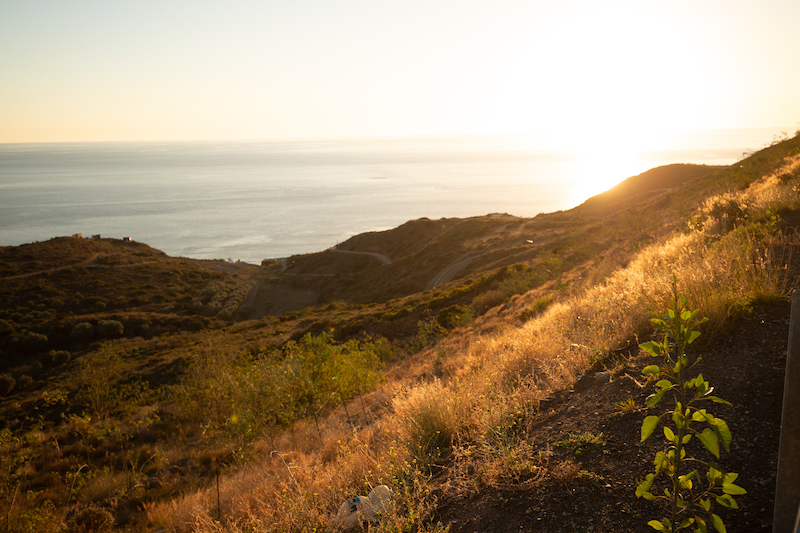
10. Check the weather forecast
Baja California can have extreme weather conditions, from scorching heat during the day to chilly nights. During the rainy season, many roads in Baja, including major highways, can get flooded.
I came across Baja’a flooded highways multiple times. When it rains heavily for a few hours in Baja, lower parts of the highway can get flooded to the point where they become unpassable. It could take hours before the level of water drops, and you can keep driving again. Highways in rural parts of Baja are often prone to flooding.
11. Watch out for wildlife
Baja is home to a stunning array of biodiversity, some of which you could encounter on your camping trips. While some animals in Baja are harmless, you could also come across snakes and scorpions while hiking. Coyotes often appear in packs in the Baja desert at night and can be heard from the distance.
12. Plan for emergencies
Inform someone about your camping plans and expected return date. Familiarize yourself with the nearest medical facilities, police stations, and emergency services.
➡️ Read: Do I need a passport for Baja?
13. Don’t drive at night
For safety reasons, it’s best to arrive at your campground before nightfall. This way you can get settled, assess the area propery and avoid driving in the dark.
Driving at night in Baja California is not recommended because of the cows and donkeys that often roam along highways at night.
Major highways in Baja have only 2 lanes and with few shoulders and turnouts. Some trucks that drive at night sway in the middle of the highway, making it dangerous to share the road.
14. Don’t camp alone
Lastly, avoid camping alone, if possible. Having a companion on your trip will provide extra safety and ensure you have help in an emergency. If you plan to camp alone, it’s a good idea to come with your dog.
15. Caravan with others
Lastly, you can always caravan with others, if you want to boondock in Baja. Camping with a group of RV’s will be much safer than staying in the middle of nowhere by yourself.
Camping esstentials for Baja
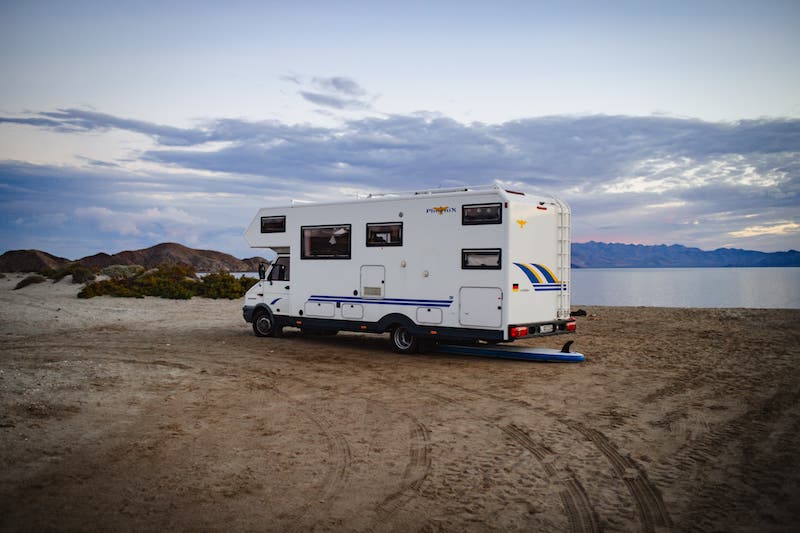
- A camping tent – a good camping tent is a must for your camping trip. Most of Baja has a rough desert terrain with cacti and shrubs that have spikes. Choose a high-quality tent made from durable materials.
- Heavy duty tent stakes – A set of good tent stakes will help you to keep your tent in place in case there’s high wind.
- A sleeping bag – If you want to enjoy tent camping in Baja, a quality sleeping bag is important. Since the surface, you will be camping on will likely be hard, a sleeping bag will make your sleep more comfortable and keep you warm at night, when temperatures often drop.
- A sleeping pad – It will make it more comfortable to sleep, so you don’t have to lay on hard desert ground.
- A flashlight (or a headlamp) – A flashlight comes in handy because unless you stay in a campground with facilities, you will have no light.
- A Baja map – A lot of places in Baja are off-grid. Your phone signal can disappear entirely, even on major highways.
- A bug spray – While mosquitoes are generally not a problem in Baja, bringing a bug repellent as sand flies are common on many beaches along the Sea of Cortez.
- A water filter for camping – Water in Baja California is not suitable for drinking, and you will need a water filter. You can also buy big refillable water bottles (el garrafon in Spanish) in local stores.
- A shovel – A must when camping in Baja.
- An axe – Also comes in handy when you need to collect some dead wood for the fire.
- Sand tracks – You should always carry sand tracks when traveling in Baja. San tracks are long pieces that you put behind your tires in case you get stuck in sand, which is common on remote roads in Baja.
- A can of gas: When driving around Baja, always have a canister of gas in your car. Depending on where you go, you might encounter long stretches of the road without a single gas station.
Things to do put in your bag:
- Hat – A good hat will protect you from the harsh desert sun.
- Sunglasses – Wear sunglasses to void harmful UV rays.
- Hiking shoes – If you want to hike and spend time in the desert, you need good hiking shoes to protect your feet from the harsh terrain.
- Camera – A must for your trip to San Felipe if you want to capture your adventures.
- Reef-safe sunscreen will protect you and keep marine animals safe.
- Swimsuit – If you visit Baja in summer when the water is more suitable for swimming, you should bring a swimsuit.
6 Best places for camping in Baja California
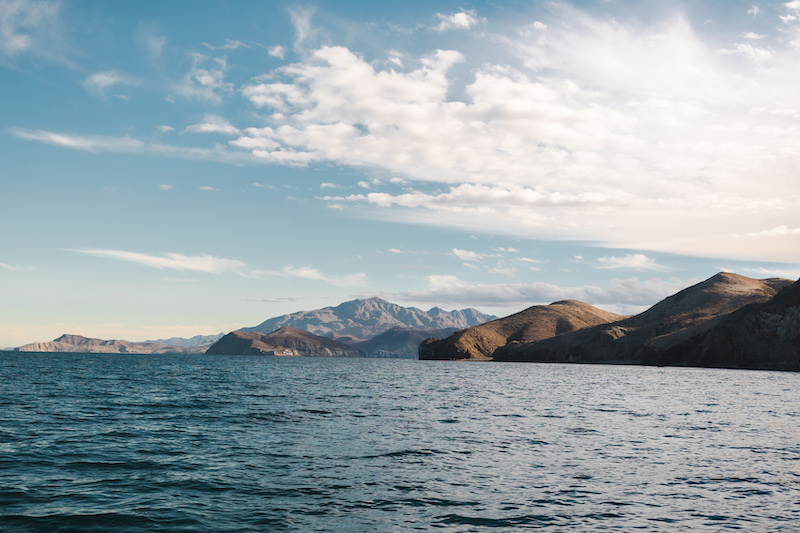
1. Bahia de Los Angeles
Also known as the Bay of LA, this small town along the Sea of Cortez is one of my favorite places for camping in Baja Norte. Bahia De Los Angeles boasts unspoiled landscapes and feels like a quiet paradise due to its remote location.
The town is semi-off-grid and feels tranquil and safe. The sunsets here are nothing short of spectacular, and you can see incredible marine animals by taking a boat tour with one of the local guides.
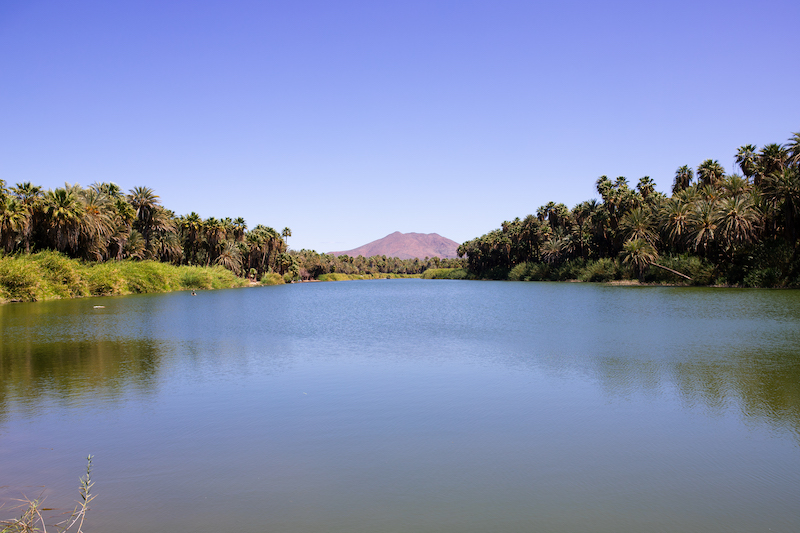
2. San Ignacio
Located halfway between Guerrero Negro and Santa Rosalia, San Ignacio is a hidden gem of Baja California known for its Jesuit mission, date palms, and a stunning green river that flows through town. There are several campgrounds in San Ignacio, most of which have good facilities and staff.
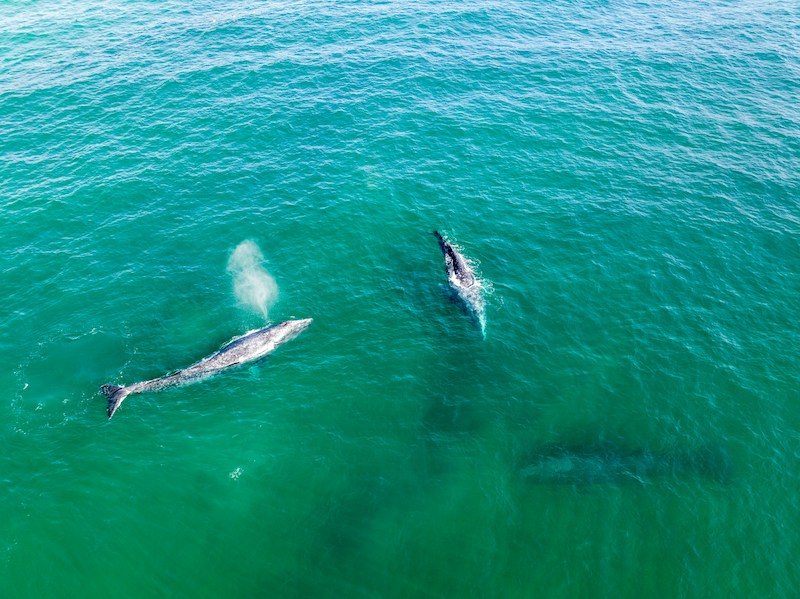
3. Laguna Ojo De Liebre
One of the best stays in Baja during the whale watching season, Laguna Ojo De Liebre is a perfect spot to enjoy remote camping. The whale-watching season in Baja is from December through March, and you can take a whale-watching tour while staying at this campground. Camping here costs $5 per night.

4. Loreto
Loreto is one of the most popular destinations for eco-tourism in Baja California. Loreto has several campgrounds around town and the Sea of Cortez around town. It’s an excellent place to camp if you want to spend time in nature, but don’t want to be too far from amenities.
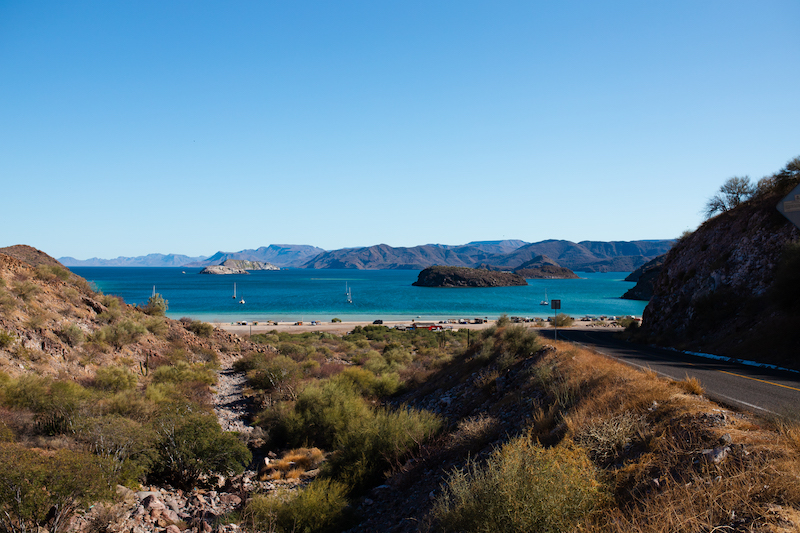
5. Bahia Concepcion
Located along the Sea of Cortez south of Mulege, Bahia Concepcion (Bay of Conception) is one of the most popular camping areas in Baja.
The bay is home to a group of beaches that include Playa Santispac, Playa El Burro, Playa El Coyote, Playa Buenaventura, and Playa El Requeson.
Popular campsites in Bahia Concepcion have basic facilities, staff and nearby restaurants. Although you will be relatively safe, the downside of these campsites is that they can get busy during winter, when many RV’ers and snowbirds come to Baja.
6. Vizacaino Peninsula
One of the best places for camping in Baja if you are looking for remote spots. Located south of Guerrero Negro, this area is home to several small towns like Bahia Tortugas, Bahia Asuncion, and Punta Abreojos, which is near San Ignacio Lagoon, one of the top spots for whale watching in Baja.
The small fishing towns in Vizcaino Peninsula are away from drug trafficking routes in Baja. Although they are relatively off the beaten path, camping there is considered safe, because of the low crime rate.
If you want to escape the crowds in places like Bahia Concepcion, this is the best part of Baja that you can visit.

Free camping in Baja
Free camping is plentiful in Baja. Drive outside the nearest town, and once you are in the desert, you can find plenty of space to camp.
Unfortunately, remote camping in Baja isn’t always safe, depending on where you are on the peninsula. Instead of choosing a place to camp on a whim, always research where you want to stay.
Additionally, free campsites in Baja come on a first-come, first-serve basis and popular campgrounds can fill up quickly during the busy season.
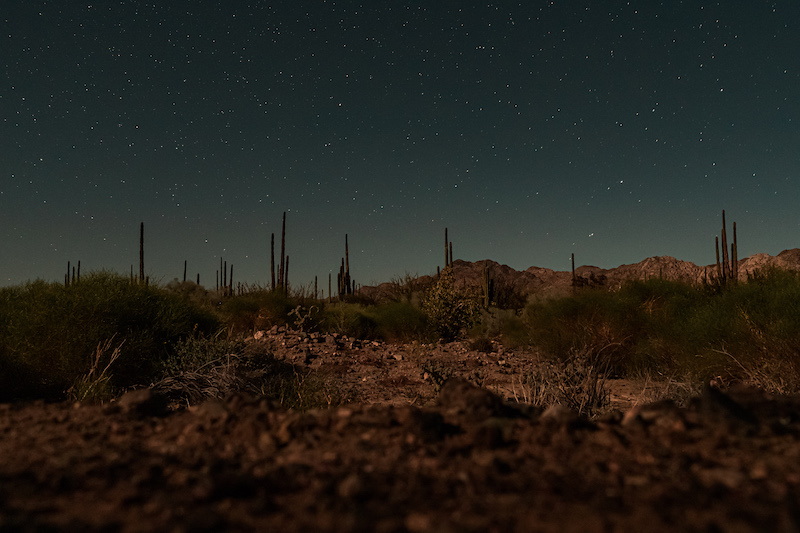
Beach camping in Baja
Beach camping in Baja is a surreal experience that you can enjoy along the Sea of Cortez and the Pacific Ocean. Some of the best camping areas for beach camping in Baja are Bahia de Los Angeles, Mulege, and Bahia Asuncion, a small fishing town south of Guerrero Negro. San Juanico, also known as Scorpion Bay is a popular surfing spot where you can camp on the beach.
5. Tips for camping on Baja’s beaches:
Although Baja boasts many great beaches for camping, you should always do your research before choosing a place to stay. Baja beaches are considred public land, but unfortunately, more remote areas have seen increase in criminal operations, especially along the Sea of Cortez.
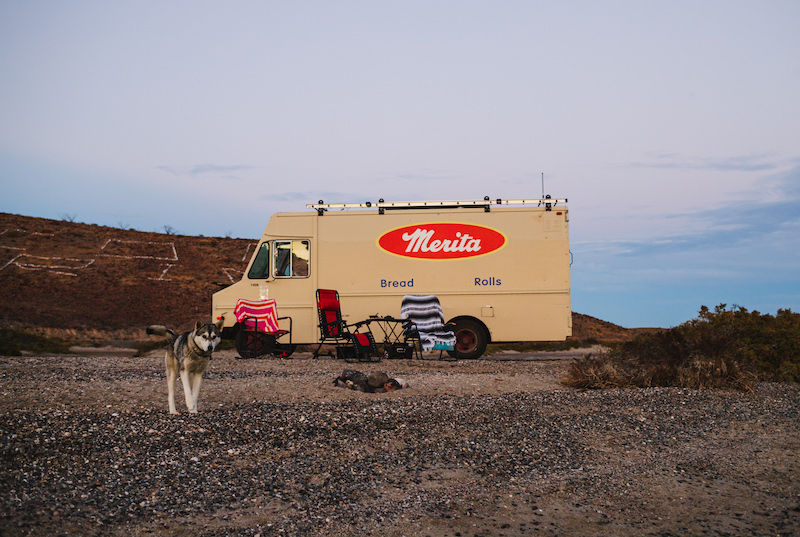
1. You don’t always need a 4×4
Many people think that you need a four-wheel-drive to enjoy beach camping in Baja, but the truth is, there are plenty of camping areas on both sides of Baja that are accessible by standard cars or RVs without high clearance.
2. Check a campground on iOverlander
A great app where you can find information about a specific campground and read reviews from fellow travelers.
How does iOverlander work?
iOverlander is a free app where you can find helpful infromation about dispersed camping, facilities for campers and RV’s and find helpful reviews from many fellow travelers.
3. Avoid driving on soft sand
When looking for places to camp near the beach, avoid roads with white soft sand where you can get stuck.
4. Don’t expect good facilities
If you want to rough it out on Baja’s beaches, prepare for the lack of facilities like showers and toilets. Some beach campgrounds in Baja have facilities, but they tend to be very primitive.
5. Leave no trace
No matter where you camp in Baja, you should always follow the principle of leaving no trash. Most campsites in Baja are primitive, which means no one will pick up your trash after you leave. Always pack in everything you bring with you.
6. Don’t leave any gear unattended
Petty theft can occur in any campground, that’s why you should never leave any camping gear outside your vehicle.
7. Respect your neighbors
If you choose to boondock on a popular beach, chnaces are, you will have other campers near you. Respect everyone around you, avoid playing loud music and keep the place clean.
Tent camping in Baja California
Tent camping in Baja can be a lot of fun, but for safety reasons, you should choose well-reviewed, safe campgrounds and avoid camping alone in the wilderness.
Best time for camping in Baja
May through September is a good time for camping in Baja, if you are looking for lower RV crowds. Although it can be hot, you won’t find tons of RV’s in Baja’s campgrounds like during the busy winter season.
However, if you prefer mild weather, consider November through April, when temps throughout Baja are lower. Be prepared to share your space with dozens of snowbirds, especially if you want to try beach camping in Baja.
Don’t forget to get Mexican insurance for your vehicle.
If you are driving your RV or car to Mexico, you will need Mexican Insurance, which is mandatory for driving in the country.
Where to buy Mexican car insurance?
Baja Bound is the best place to get good Mexican car insurance. Baja Bound has been in business for many years and is trusted by many American and Canadian travelers. It offers insurance plans for cars, motorcycles, RVs, and motorhomes.
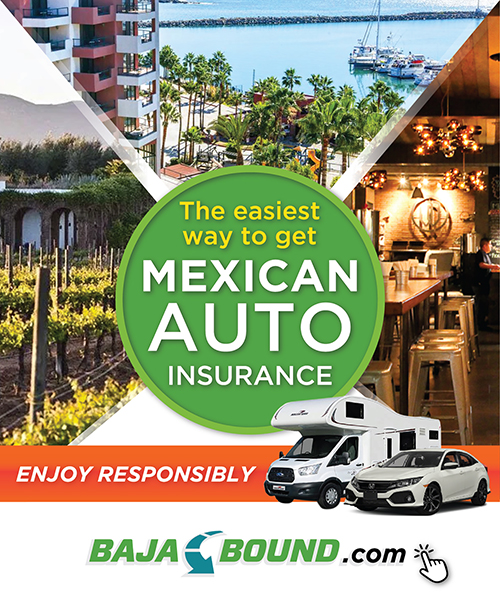
Can I drive in Mexico with a US license?
Yes, you can drive in Mexico with a valid US driver’s license as well as driver’s licenses from Canada, and EU and UK. If your license is not in English, you will likely need to get an International Driving Permit that is typically valid for two years.
Camping in Baja California: FAQ’s

Can you boondock in Baja California?
Yes, you can boondock in Baja California, but you need to be extra careful about where you do it. Gather as much information as you can, read reviews, and download offline maps to ensure better safety.
Is Baja California worth going to?
Yes, Baja California is worth visiting. It’s a vast area known for surreal landscapes, quaint desert towns, and stunning biodiversity.
Is it cold in Baja California?
Baja California has a dry sunny climate most of the year, with exception of the hurricane season when the peninsula sees the increased precipitation. Baja’s mild winters attract many snow birds and RV’ers looking for warmer temperatures.
When should I go to Baja California?
The best time to visit for pleasant weather is from October to April. During these months, temperatures are milder and more comfortable, perfect for outdoor activities like snorkeling, hiking, and camping. This period also coincides with whale watching season along the Pacific Coast of Baja.
For beach lovers and water sports enthusiasts, the summer months can be enjoyable despite hotter temperatures. The Sea of Cortez side has calmer waters, more suitable for swimming.
What is special about Baja California?
Baja California is renowned for its diverse and breathtaking landscapes. From the rugged mountains of the Sierra de San Pedro Mártir to the expansive desert of Valle de los Cirios, and the stunning coastline along the Sea of Cortez and the Pacific Ocean, the region is a paradise for nature lovers and outdoor enthusiasts.
Can I drive my car into Baja California?
Yes, you can drive your car into Baja California, but you need to get Mexican insurance and the required paperwork.
Do I need pesos in Baja?
Yes, you need pesos in Baja. Although many businesses in popular destinations like Cabo and Tijuana, accept U.S. dollars, paying with the local currency will help you get a better rate.
Can you camp overnight at a beach in California?
Yes, you can enjoy overnight camping at Baja beaches, but you need to take safety precautions. Depending on where you decide to camp, you should also bring paper maps and basic supplies to ensure you can be self-sustainable in an emergency.
What are the problems in Baja California?
Long driving distances, coupled with a lack of facilities and infrastructure are the biggest problems in Baja California.
Can you drink tap water in Baja California?
No, you can’t drink tap water in Baja California. Always carry a filter if you plan to camp, and buy bottled water in stores.
Is Baja California worth going to?
Yes, Baja California is worth a visit. The region boasts diverse landscapes from pristine beaches along the Sea of Cortez and the Pacific Ocean to dramatic desert scenery in Catavina and rugged mountains in San Pedro Martir National Park.
Baja is a paradise for outdoor enthusiasts with opportunities for surfing, snorkeling, scuba diving, whale watching, hiking, and off-road adventures.
What is hurricane season in Baja California?
The hurricane season begins in July and lasts until the end of October. During this time, the peninsula sees the increased precipitation with frequent rainstorms when many highways in Baja get flooded.
What areas to avoid in Baja California?
Avoid remote areas of Baja California where crime is more likely to happen. Exercise extra caution near the U.S.-Mexico border and be vigilant along remote stretches along the Sea of Cortez south of San Felipe due to drug trafficking routes.
Why didn’t the USA take Baja California?
According to the treaty of Guadalupe Hidalgo in 1848, Mexico ceded vast territories to the United States, including present-day California, Nevada, Utah, Arizona, New Mexico, and parts of Colorado and Wyoming. Baja California was not part of the ceded territories.
Camping in Baja California: final word
Despite current concerns about camping safety in Baja California, you can still (and should) enjoy this activity. Do your due diligence, spend time researching the places that you are intersted in and talk to fellow travelers. You can find plenty of information with relatively little effort these days, which could pay off in a big way, if it helps you to stay safe. I hope this article answered your questions and provided enough information for you to make a sound decision regarding your trip to Baja.

